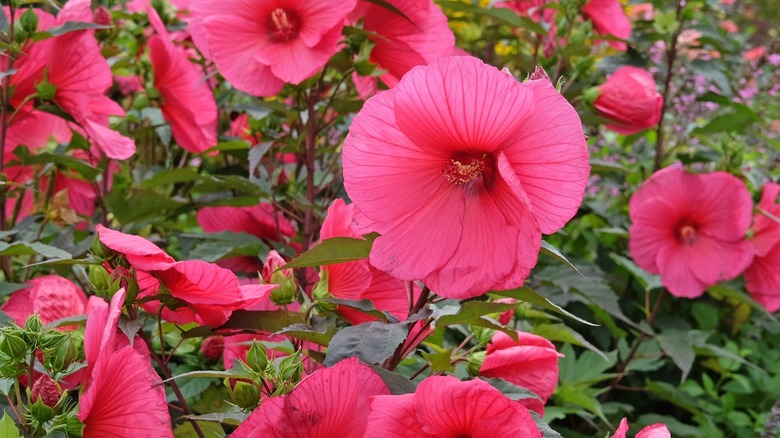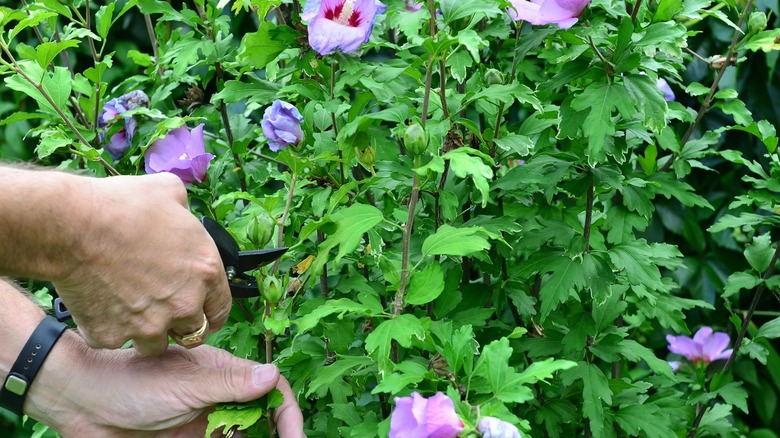Fall Is Upon Us: How To Provide Seasonal Care For Hibiscus Flowers In Your Garden
As fall settles in, hibiscus flowers won't be fooled by a quick trim. They're counting on intentional fall care to carry them through. How you treat hibiscus in the fall sets the tone for next year's show, when strong stems and lush foliage support bigger, more reliable blooms, once the weather warms again. Plus, a hibiscus that gets the right care will reward you by attracting more pollinators to your yard and garden. Just imagine, more life and color all season long!
But, if you skip fall care, your hibiscus will let you know. Stressed plants will limp into spring, with fewer flowers, weaker roots, and thinner growth. Without protection, they're at the mercy of cold snaps and wild temperature swings, burning through their reserves just to hang on. That's why fall prep is your insurance policy. A little effort now means stronger roots, healthier plants, and a garden full of blooms when summer rolls back around.
Not every hibiscus follows the same playbook, which is why you'll want to know the difference between hardy and tropical species. Hardy types, like swamp mallow (Hibiscus moscheutos) or Rose of Sharon (Hibiscus syriacus), can tough out frost and even thrive when pruned after their leaves fall. These winter-hardy perennials grow in USDA zones 4 through 9. Meanwhile, tropical hibiscus, such as Chinese hibiscus (Hibiscus rosa-sinensis), which grow in zones 9 through 11, are a bit fussier. You want to skip pruning these in the fall and focus on protecting them instead. Once the nights turn chilly, move your potted plants indoors or cover shrubs in the yard. With nearly 300 species in the mallow family, it's always smart to check your plant's care guide to make sure you're giving your variety exactly what it needs.
Giving hibiscus the fall care it craves
Pruning is one of the most important fall tasks when you're growing hardy hibiscus. Trim back dead or damaged branches 3 to 5 inches above the ground once leaves have fallen, and remove any spent flowers or seed pods as well. This encourages bushier growth and stronger stems in spring. Using clean, sharp tools will prevent disease and keep your plants healthy. For tropical hibiscus grown outdoors, hold off on any trimming until spring, once the threat of frost has passed.
Mulching and proper fertilizing are key to protecting hibiscus roots through the colder months. Spread a generous 2 to 3 inch layer of organic mulch around the base of potted or in-ground plants to insulate roots and keep soil moisture steady. Give the soil a deep drink before the first freeze to prevent drought stress, then ease up on watering, so the plant can slow down for winter. Overwatering now can lead to root rot, so be careful. A low-nitrogen, high-potassium fertilizer will also help boost cold resilience and strengthen existing stems without encouraging new growth that could get damaged over winter.
If you've brought your potted hibiscus indoors, and it's in a warm environment, you can selectively prune it to maintain its shape, as it will continue to grow a little. Just keep in mind that your plant will require less water during this time. Once spring comes around again, you may want to give your hibiscus a heavier prune before taking it back outside. If you follow them closely, these tips and tricks will keep your hibiscus plant growing and thriving.

